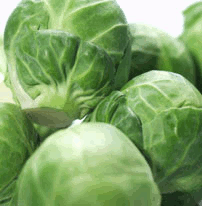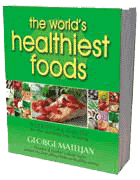


Can you get too many antioxidants?
When we hear the word "antioxidants," many of us automatically think how good they are for us. In our minds, antioxidants are the good guys. We may not be exactly sure what they do, but the "anti" in their name tells us that they protect us by fighting off something bad. And if they're the good guys fighting the bad guys, how could we possibly get too many?
On top of this good guys versus bad guys perspective, we also know that many antioxidants are vitamins - vitamins as familiar to us as A and C and E - and minerals such as zinc and selenium. And that these are nutrients that we know are of benefit to our health (There are other antioxidants, though, that are not nutrients at all, but rather compounds in our bodies with various physiological function; for example, uric acid and ceruloplasmin are two of the key antioxidants found in our bloodstream.)
Yet, it turns out that it is just the black and white story that if antioxidants are good for us, then more is better. Like an orchestra that needs the correct representation of instruments to make a beautiful symphony, our bodies need an array of antioxidants, not just this one or that one, to create harmony in our health.
Antioxidants Aren't The Same As "Good Guys"
During the 1990's, researchers began to conduct very large-scale studies (involving tens of thousands of participants) to determine the benefits of antioxidants in fairly high doses. The Alpha-Tocopherol, Beta-Carotene, and Cancer prevention study (ATBC), the Physicians' Health Study (PHS), the Beta-Carotene and Retinol Efficacy Trial (CARET), and the Skin Cancer Prevention Study (SCPS) were among these large-scale studies. One very unexpected result in several of these studies was the fact that antioxidant dietary supplements actually raised increased the risk of disease instead of lowering it. In fact, some studies were abruptly canceled, with letters being sent to participants, explaining that antioxidant supplementation seemed to be putting them at greater health risk. While many of these studies have been criticized, and their results debated among scientists, this decade of research changed our thinking about antioxidants and their health role. What we are now realizing is that it is not just antioxidants working in isolation that have benefits but that antioxidants need each other to function optimally and promote our optimal health.
A Little Bit of Chemistry: Leftover Electrons
The problem with thinking about antioxidants as "good guys" is that every antioxidant can become a prooxidant, i.e., it can reverse its role in our metabolism. In chemical terms, when a substance functions as an antioxidant, what it does it give away an electron. Electron-give-away is what antioxidants do. (This potential power for giving away electrons is called reduction potential).
What's so good about a compound that gives away electrons is that it can donate it to a "reactive" substance that is in need of one since substances in our body can become far too reactive when they are left with an uneven number of electrons. (Electrons like to exist in pairs, and don't like being "unpaired"). One leftover electron is enough to cause trouble.
When a substance has a leftover electron and become too reactive, it can damage anything nearby, including the wall of a blood vessel or the membrane of a cell. (Highly reactive substances that cause damage to body parts include a group of substances you may already be familiar with, called free radicals). If these highly reactive substances can just get hold of one additional electron, they can be quieted and potential damage can be avoided. That's what's so good about antioxidants that give away electrons.
However, when an antioxidant gives away an electron, another problem occurs. The antioxidant itself becomes a radical, because it now has a leftover electron. When vitamin C (ascorbic acid) acts as an antioxidant and gives away an electron, it becomes vitamin C radical (ascorbyl radical). It's no longer helpful to us as an antioxidant (or a vitamin) in this form. Like all radicals, we don't want excessive amounts of ascorbyl radical in our body. But what's the solution?
A Team of Jugglers
The solution is for another antioxidant to provide vitamin C radical with its needed electron. And that's exactly what happens here, when an antioxidant like glutathione comes in to save the day. Glutathione can turn vitamin C radical back into normal vitamin C! When this happens, vitamin C turns back into its helpful antioxidant self. But glutathione becomes glutathione radical and now it goes off in search of a third antioxidant to provide it with its missing electron. Luckily, lipoic acid (in the form of dihydrolipoic acid, or DHLA) is able to do just that.
This process of losing and gaining electrons is like a juggling act. As long as you have a lot of different jugglers staying very active and throwing a lot of balls (electrons) back and forth in the air at the same time, your body stays healthy. The secret of antioxidants is working together as a team, a juggling team that keeps us healthy as long as the focus is on teamwork.
Food Is the Place for Teamwork
There is really only one place outside the body where we can count on finding the antioxidant juggling team: in a balanced diet containing natural, whole, minimally processed and organically grown food. The reason is simple. It's not only vitamin E and vitamin C and beta-carotene and glutathione and lipoic acid that belong to the antioxidant juggling team, it's all of the food components that provide natural color and flavor to food, the flavonoids and carotenoids and other types of pigments that you can only find in whole natural foods. You don't get the complete antioxidant team when you take a dietary supplement, no matter how high in quality. Nor do you get the complete antioxidant team when you eat processed foods with artificial flavors and colorings in place of natural flavonoids and carotenoids. It takes a whole, natural foods diet to provide you with complete antioxidant teamwork. That's one reason we feel so strongly about the value of the World's Healthiest Foods.
Could I Get An Antioxidant Overdose From the World's Healthiest Foods?
If it's possible to get an overdose of antioxidants from balanced consumption of whole, natural, organically grown foods, we are certainly a long way from witnessing that possibility in any scientific research study. What's so remarkable about research on antioxidants is that food studies consistently show benefits - and only benefits - to balanced consumption of whole, natural foods that provide the entire antioxidant juggling team. Studies showing increased health risk from consumption of antioxidants have always been studies including dietary supplements of antioxidants - and usually a few select antioxidants - not anything close to the full electron juggling team. Antioxidant supplements can definitely play a helpful role in lowering our risk of disease, but it's a mistake to think about antioxidant supplements as a kind of "insurance program" or "safety net" where we're just building up our army of "good guys." It's the complete juggling team that our body depends on, and that's one of the key reasons the World's Healthiest Foods are our best antioxidant bet.
References
Abou-Seif MA. Blood antioxidant status and urine sulfate and thiocyanate levels in smokers. J Biochem Toxicol. 1996;11(3):133-138.
Brighenti F, Valtuena S, Pellegrini N, et al. Total Antioxidant Capacity of the Diet Is Inversely and Independently Related to Plasma Concentration of High-Sensitivity C-Reactive Protein in Adult Italian Subjects. Br J Nutr. 2005;93(5):619-25.
Gohil K, Packer L. Bioflavonoid-Rich Botanical Extracts Show Antioxidant and Gene Regulatory Activity. Ann N Y Acad Sci. 2002:957:70-7.
Moini H, Packer L, Saris NE. Antioxidant and Prooxidant Activities of Alpha-Lipoic Acid and Dihydrolipoic Acid. Toxicol Appl Pharmacol. 2002;182(1):84-90.
Noda Y, Kaneyuki T, Mori A, et al. Antioxidant Activities of Pomegranate Fruit Extract and Its Anthocyanidins: Delphinidin, Cyanidin, and Pelargonidin. J Agric Food Chem. 2002;50(1): 166-71.
Noda Y, Kaneyuki T, Igarashi K, et al. Antioxidant Activity of Nasunin, an Anthocyanin in Eggplant Peels. Toxicology.2000;148(2-3): 119-23.
Souri E, Amin G, Farsam H, et al. The Antioxidant Activity of Some Commonly Used Vegetables in Iranian Diet. Fitoterapia. 2004;75(6):585-8.



